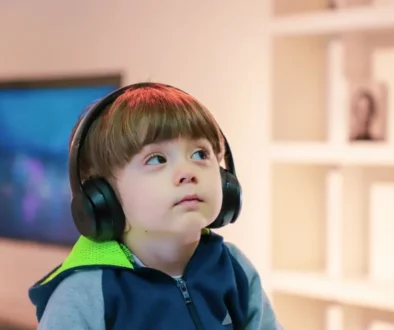Managing Meltdowns in Children With Autism Spectrum Disorder
With 1 in 44 children in the US being diagnosed with autism spectrum disorder, it’s important for everyone to learn how to interact with them.
All children have meltdowns from time to time, but for children with autism spectrum disorder (ASD), meltdowns can be a regular occurrence. Not only are these episodes frustrating for the child and caregivers, but they are also destructive and embarrassing.
Children on the spectrum react to meltdown triggers in a different way. For some, they are triggered by a change in routine, while for others it might be too many stimuli. Despite having different triggers, the result is the same—the child becomes overwhelmed and struggles to cope.
Fortunately, there are strategies to manage meltdowns in children with ASD. Keep reading to learn more.
What is Autism Spectrum Disorder?
Autism spectrum disorder is a neurodevelopmental disorder that affects social skills, communication, and behavior. Children with ASD often have difficulty regulating their emotions and become overwhelmed.
This leads to meltdowns, which are sudden outbursts of anger or frustration.
How to Diagnose Autism Spectrum Disorder
The cause of ASD is unknown, but it is believed to be caused by a combination of genetic and environmental factors.
If you’re in the state of Texas, Developmental Pediatrics offer both telemedicine and in-person testing using The Autism Diagnostic Observation Scales 2 (ADOS 2) method. This method is the gold standard for diagnosing ASD. ADOS 2 uses a set of activities and questions to observe social and communication skills as well as repetitive behaviors.
What Causes A Meltdown?
Before you can manage a meltdown, it’s important to understand what causes them. Every child is different, so what triggers a meltdown for one child may not be the same for another. However, there are some common triggers that you should be aware of, such as:
- Changes in routine
- Loud noises
- Bright lights
- Large crowds
- Certain textures
If you know what triggers your child’s meltdowns, you can try to avoid them. However, sometimes meltdowns are unavoidable. When this happens, it’s important to stay calm and follow the steps below.
What Are the Signs of an Impending Meltdown?
There are several signs that a child with ASD is about to have a meltdown. These include:
- Withdrawing from social interaction
- Fixating on one thing or becoming obsessed with a particular topic
- Engaging in repetitive behaviors
- Loss of speech or increased use of echolalia (repeating someone else’s words)
- Increased aggression or self-injurious behaviors
How to Prevent Meltdowns
There are several things you can do to prevent meltdowns from happening in the first place. The first is maintaining a routine. Try to stick to a regular daily routine as much as possible.
This will help your child to feel secure and know what to expect. Before you go into a situation that may be triggering for your child, take some time to plan and prepare. This can help to prevent a meltdown from happening.
If you know that a particular activity is going to be challenging for your child, give them a warning beforehand. This will help them to prepare for the activity and hopefully prevent a meltdown.
Finally, help your child to develop coping skills that they can use when they’re feeling overwhelmed. This could include deep breathing, visualization, or positive self-talk.
How to Manage Meltdown Moments
When a meltdown does happen, try to stay calm. This is often difficult, but it’s important to model calm behavior for your child.
Identify the trigger for the meltdown. Was there a particular event or situation that set it off? If so, try to avoid that trigger in the future.
Offer support and understanding. Let your child know that you are there for them and that you understand how they’re feeling.
Help your child to find a safe place to calm down. This might be their bedroom or a quiet corner of the house. Encourage your child to use coping mechanisms such as deep breathing or relaxation exercises.
Avoid trying to reason with your child during a meltdown. This can only make the situation worse.
Once the meltdown has subsided, talk to your child about what happened and help them to understand their emotions. This will help to avoid future meltdowns.
Develop Communication Strategies
One of the best ways to manage meltdowns is to develop a communication strategy with your child. This can help them to understand their triggers and how to avoid them. It can also help you to communicate with your child during a meltdown.
There are several different communication strategies that you can use, such as:
Picture Exchange Communication System (PECS): This system uses picture cards to help children communicate their needs.
Social stories: Social stories are short, simple narratives that explain a particular situation. They can be used to teach your child what to expect in different situations and how to respond.
Visual schedules: Visual schedules use pictures or symbols to help children understand what they need to do and in what order.
Provide a Calming Environment
When a meltdown is happening, it’s important to provide a calm and soothing environment for your child. This can help to reduce their anxiety and prevent the meltdown from escalating.
Some ways to create a calming environment include:
- Playing soft music
- Turning off bright lights
- Giving your child a weighted blanket or stuffed animal to help them feel grounded
- Using essential oils such as lavender or chamomile
Encourage Positive Self-Talk
One of the best ways to calm down during a meltdown is to encourage your child to use positive self-talk. This can help them to focus on something other than their anger or frustration. For a nonverbal child, the caregiver is the one doing the talking.
Some examples of positive self-talk include:
- I can handle this
- I am calm and in control
- This is only temporary and it will pass
Provide Physical Comfort if Appropriate
Physical touch can be very calming for some children with ASD. During a meltdown, you may want to try hugging your child or holding them in your lap. You can also try rubbing their back or stroking their hair.
For some children with ASD, physical contact is overwhelming. It is therefore important to know your child and how and when they are open to being touched. Before making contact, understand your child and their signals.
Use Positive Reinforcement
When a child is having a meltdown, it’s important to avoid punishment. This will only make the situation worse. Instead, try to use positive reinforcement to encourage good behavior.
Caring for Children with Autism Spectrum Disorder
Meltdowns are a common occurrence in children with autism spectrum disorder. With these tips, you can practice avoiding meltdowns. And if one does occur, these are the steps you can take to help your child through it.
Dealing with ASD meltdowns isn’t the easiest thing to do, but once you know the meltdown signs and have your tools to lean on, they get better. For more information on how to prevent meltdowns or general care for your child on the spectrum, contact us today. We can help you evaluate your child and provide support in compassionate care.



